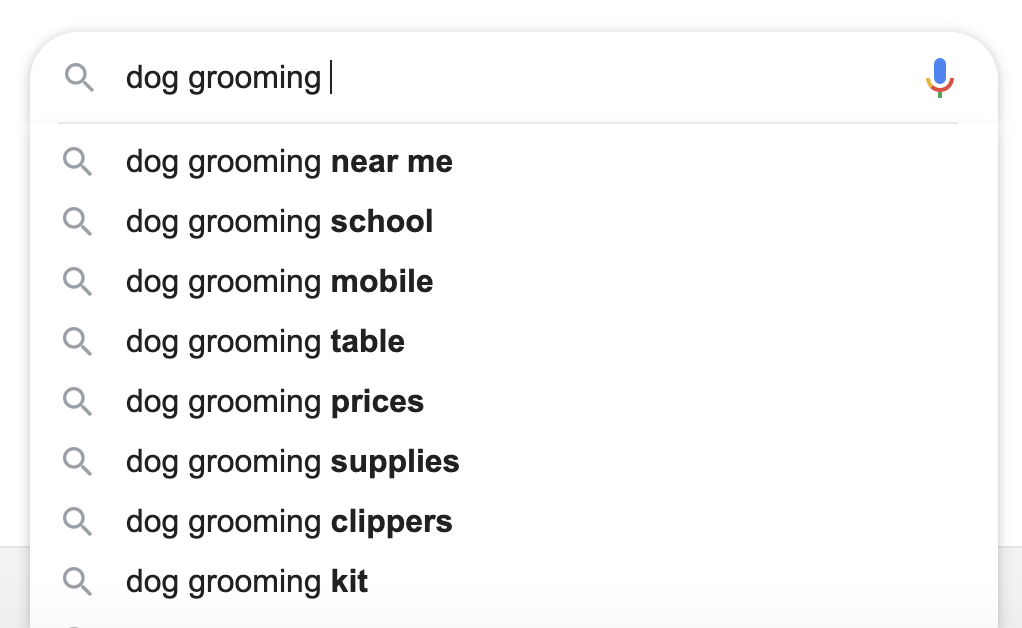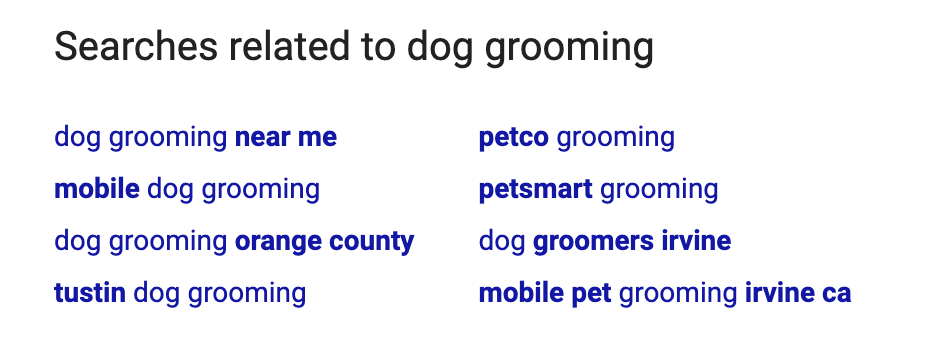If you run a business, you’ve likely heard that you need to produce new content ideas for your blog and social media every week.
That’s fine when you are just starting out, but after a few weeks or months, you will find your reservoir running dry. Don’t worry; running out of creative content ideas is totally normal. It’s the biggest reason most people give up on content marketing early.
But while it’s normal to run out of content ideas, you shouldn’t allow it to stop you.
How Do You Come Up With Great Content Ideas?
The truth is, if you are serious about growing your ranking on Google with content marketing, it can take two or more years of consistently posting every week. If you want to reach the first page or get a featured snippet, it can take five years of consistent content creation.
Luckily, there are ways to shortcut it. Especially if you know what people are searching for in your business niche, and you focus on answering those questions first.
A lot of people get obsessed with Facebook, Twitter, Instagram, and TikTok as sources of content ideas. However, the issue here is that user generated content (which is everything on a social media account) doesn’t necessarily align to your target audience.
Your next big content marketing idea isn’t usually discovered in a social media post. This is because every social media post is focused on the person who posted it.
For example, if you take a look at the Instagram feed or Instagram story of your best customer, it’s not likely they will be posting about things you can write about when you create content.
How Do You Brainstorm Content Ideas?
Your next content idea doesn’t have to be some earth-shattering, ground-breaking piece; you just have to know what your audience is searching for and align with it.
Like most things on the internet, it’s Google that comes to your rescue for creative content ideas.
Google is not just an excellent tool for finding things; it’s a secret weapon for figuring out new content ideas for your business.
Once you understand how Google can help with you content ideation, your content calendar will be full and keep you on track.
In this article, we will look at three ways you can use the first-page results on Google to generate content ideas.
1) Google Autocomplete
Have you ever noticed how Google automatically adds words to any search that you type in the search bar?
This nifty feature is called Google autocomplete, and according to the company’s own explanation:
‘Google makes search predictions based on factors, like popularity or similarity.’
Autocomplete on Google might be the easiest way to come up with new content ideas that can attract attention to your website.
For example:
Imagine you run a dog grooming business, and you want to know what people are searching for around your niche.
As soon as you start typing the words ‘dog grooming’, you will notice the additional words start to autocomplete after it. These suggestions are the most popular next words that people typically type after the key phrase.

Immediately you can see seven ideas that you can write more about when it comes to dog grooming: dog grooming school, dog grooming mobile, dog grooming table, dog grooming prices, etc.
Each of these topics can easily be expanded into another blog article. For example, you could write one about ‘What is the best kind of table for dog grooming?’ A dog grooming table might sound like a tedious subject to write about, but people are searching for it.
Take all these ideas and write a helpful article (or make a video) about each of them. Use the exact phrases from the Google autocomplete, and you are more likely to start ranking for these terms.
You next great content idea doesn’t need to be some huge thought leadership piece – great content is more directed to the needs that are already out there.
2) People Also Ask (Related Questions)
Most Google search queries fall into one of three categories:
- Informational – the searcher has a question about a topic (e.g., Why is the sky blue?)
- Navigational – the searcher wants to find a specific website (e.g., Amazon)
- Transactional – the searcher wants to buy something (e.g., Nike Blazer)
For most informational intent searches, you will see a box that populates just below the first few search results. This section titled ‘People Also Ask’ is where related questions to the search will show.
For our example of searching the term ‘dog grooming’ these were the related questions:

You can see immediately that these questions all relate to price and the act of buying dog grooming. That’s an excellent opportunity for you to create some helpful content around. Write an article (or record a video) about ‘should you tip a dog groomer’ and give a clear answer.
This article topic will help those considering visiting a dog groomer, and your business will be the website that answers the question. As a bonus, when you answer questions like this you are creating evergreen content, which helps build your topic authority and SERP rankings on Google at the same time.
3) Bottom of the Page Results
The third place to get content ideas for your blog is at the very bottom of the page on Google. Here you will see the words ‘Searches related to’ and then your topic.

You will notice that some of these searches are more targeted to the location you are in. This is a good indication of keywords that you should list on your website. If your business is location-specific, then make sure to add these types of terms into your content at the bottom of the page if you can. This will make your audience more likely to click on your site as it has location specific information.
You might also notice competitor names popping up here, and that’s a good indication of who is ranking well for those search terms.
If you are a small business, don’t worry too much about getting your brand name in the search results. It’s far more important that you include competitor names in your articles where you can (especially big brands), as well as the locations you service.
Start With ‘Why’ Questions
The hardest part of creating content is coming up with a good content idea. But these three features on the first page of Google can help you make a start.
With this content strategy, you can be certain that people in your audience are searching for these terms and you can be the one to help them.
A great rule of thumb is to always start with the ‘why’ questions about your business.
No matter what product or service you have, it’s likely your customers ask ‘why’ questions. Answer these in written and video format, and you will start to see your online traction, and Google rankings grow.
Remember: even though you know all the answers to the simple questions related to your business, your customers and prospects don’t. Take the time to answer them in a helpful way and you will grow your reach and online rankings quickly.
Test Every Content Idea With Google’s Results
Engaging content that actually answers people questions will start to rank well in Google, and bring you a lot more attention than social media marketing can offer.
Every new idea you have for a blog post should always be checked against the Google search results. Your topic idea might be interesting to you, but might not have any relevance for your audience.
Use these ideas to help Google give you an advantage in your content strategy. Any content marketer who knows what their audience is searching for, and makes it easier for them to find it will grow their brand awareness and website traffic quickly.

